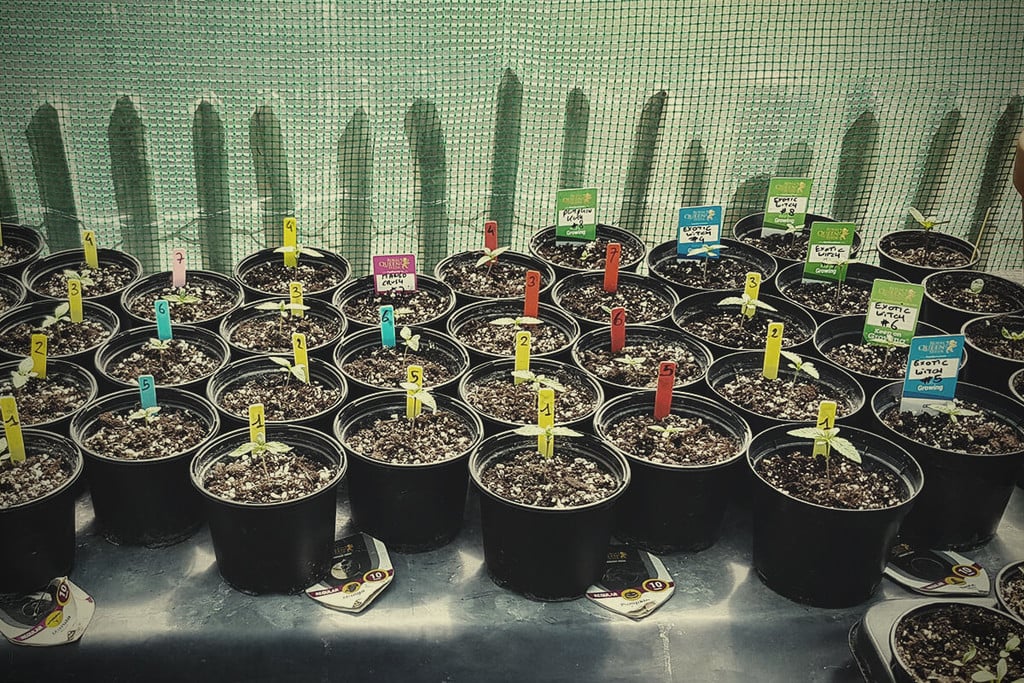.
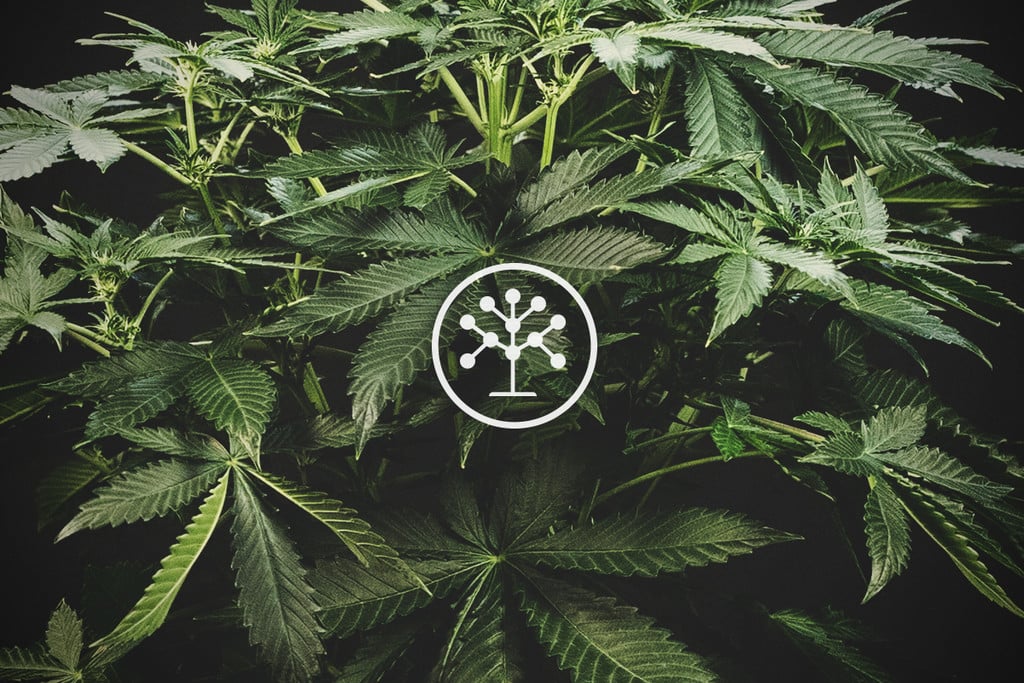
The Cannabaceae Family: Discover Cannabis' Relatives
Cannabis belongs to a large family made up of dozens of different species. Known as Cannabaceae, this group contains 9 genera, each housing its own list of species. Be prepared to have your mind blown as you discover how this family was discovered and categorised. Then, meet some of the most interesting genera in the family.
Contents:
You’re familiar with cannabis; you’ve experienced its tastes and effects, and perhaps you've even grown it. But how well do you know the plant’s close cousins?
Cannabis belongs to a botanical family called Cannabaceae (pronounced can-uh-bay-see-ay) that consists of 170 different species. Some of these members, including hops, are quite familiar, especially to those that enjoy craft beer. However, other species in Cannabaceae include relatively unknown flowering plants and berry-bearing trees. Continue reading to take a deep dive into this plant family and become acquainted with the close relatives of the cannabis plant.
Introducing the Cannabaceae Family
Also known as the hemp family, most members of this group reside in temperate regions of the Northern Hemisphere. Despite their inherent relationships, you’d never draw associations between these species based on looks alone. Some of them (such as cannabis) are erect, free-standing plants with sturdy stems, whereas others (including hops) are climbing plants that grow to lengths of around 10m. The family even includes large tree species that dwell in the forests of Madagascar, Mexico, and Australia.
But how did botanists figure out that all of these species are related? Aside from cannabis and hops, which share a few visual similarities, the rest of the family don’t particularly look alike. Well, we have the advent of genetic sequencing and subsequent advances in phylogenetics to thank for this clarification. But what do these terms even mean? Don’t worry, we’re about to break it all down for you.
History of the Cannabaceae Family
Botanists have carried out taxonomic studies for centuries; by definition, taxonomy refers to the naming, defining, and classifying of biological organisms into groups based on shared characteristics. Prior to 1583, botanists lumped cannabis with genetically unrelated plants based on characteristics such as human use and leaf shape.
However, when the aforementioned year swung around, the Italian physician, philosopher, and botanist (talk about a type-A personality) Andrea Cesalpino first drew a taxonomical link[1] between cannabis and hops. Instead of categorising plants based on rudimentary characteristics, Cesalpino broke the mould and decided to bunch them together according to their essential functions, including their flowers and fruits.
This approach enabled the botanist to make an accurate association between cannabis and hops hundreds of years ago—way ahead of his time. Now, it’s understood that all species within the Cannabaceae family possess petalless flowers and produce one-seeded fruits. But other botanists strayed from these insights. Some taxonomists placed cannabis in the Urticaceae family, a group that includes over 2,000 species, particularly nettles.
In an opposing move, other botanists placed the herb within Moraceae, a family that includes mulberry, figs, jackfruit, and breadfruit.
Many early taxonomists lumped species from Cannabaceae, Urticaceae, and Moraceae together. However, during the 18th century, the French naturalist and taxonomist Michel Adanson accurately categorised Cannabis, Humulus (hops), and Celtis together, but his finding failed to gain traction. Later down the line, it was the Russian botanist and philologist Ivan Martinov that recognised the family ties between cannabis and hops, and coined the term “Cannabaceae” to provide them with a taxonomical home.
When you think about it, these botanists of old accomplished something profound. Without the use of modern tech, they played detective and grouped genetically related plants together based on visual characteristics. Now, we have genetic tools that enable modern botanists to both confirm and correct the findings of their past colleagues.
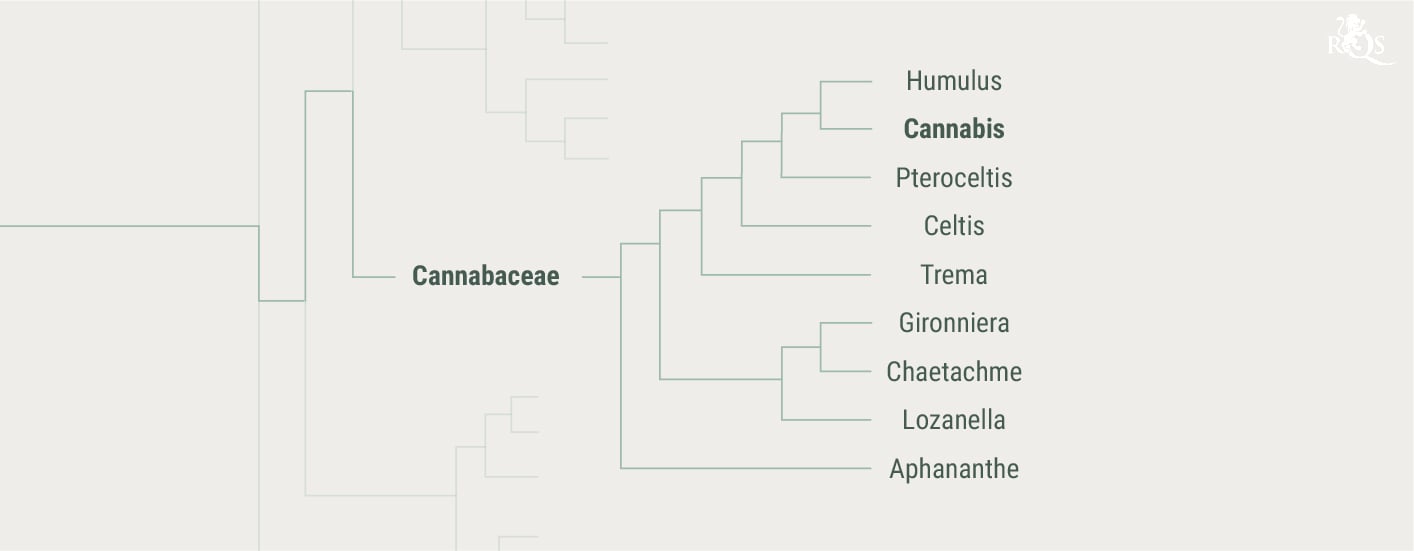
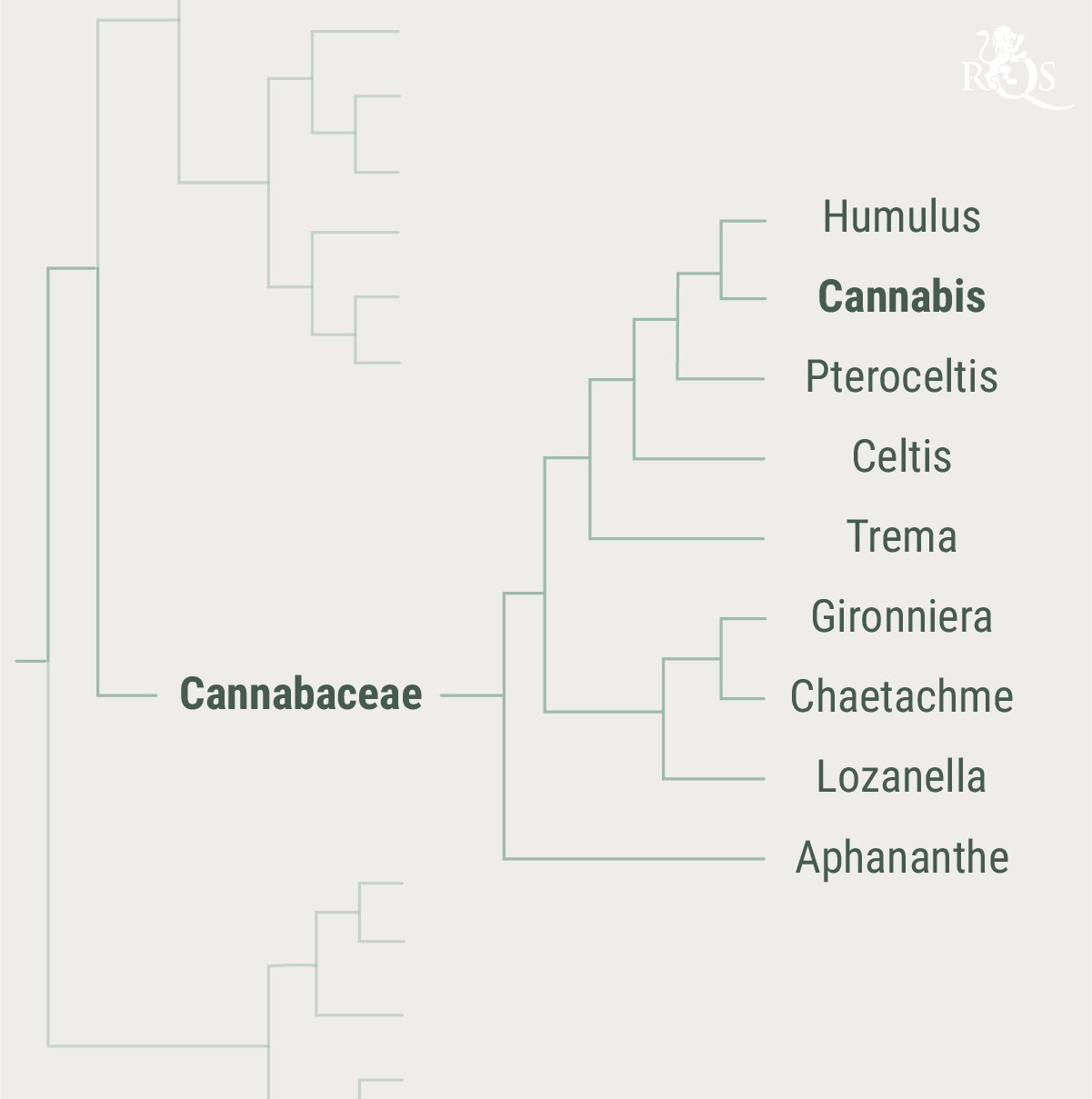
Phylogenetics Changed the Game
Instead of relying solely upon morphological and visual traits, the study of phylogenetics harnesses genetic sequencing to bunch species together into larger families. The definition of phylogenetics[2] is “the systematic study of reconstructing the past evolutionary history of extant species or taxa, based on present-day data, such as morphologies or molecular information (sequence data)”. According to the European Bioinformatics Institute[3], the major elements of phylogenetics include:
- Observe genetic sequences
- Reconstruct evolutionary histories
- Discover detailed evolutionary processes
- Develop superior evolutionary models
Researchers that work in this field are able to construct phylogenetic trees by analysing nucleotides (the basic building blocks of DNA) and protein sequences. Once mapped out, these visual displays offer a glimpse into past events that occurred throughout the process of evolution. If you type “phylogenetic tree” into your search engine, you’ll see how all life forms, families, and species branch out from each other.
Using this technology, the Angiosperm Phylogeny Group expanded the Cannabaceae family[4] by merging it with Celtidaceae. While genetic sequencing allows modern botanists to build accurate plant groups, it also helps to match these findings with similarities in morphology, phytochemistry, and ancestral reconstruction—a process that involves layering phenotypic traits on top of a phylogenetic tree. Botanists have traditionally used eight morphological characteristics[5] to classify species within Cannabaceae, including:
- Sexual system
- Leaf arrangement
- Pollen aperture number (the number of soft areas on a pollen grain)
- Aestivation (arrangement of flowers)
- Fruit type
- Seed coat morphology
- Perianth (non-reproductive part of the flower) at fruiting time
- Stipule arrangement
So, what does the Cannabaceae phylogenetic tree look like? First of all, it helps to understand the differences between a genus and a species before we go any further. In the world of binomial nomenclature, a genus ranks higher than a species in the hierarchy of classification, meaning that species similar to one another belong to the same genus, and multiple genera make up a family.
Take cannabis, for example. Some botanists claim that the Cannabis genus is monotypic and comprises only Cannabis sativa, whereas others propose it consists of three different species[6]: C. sativa, C. indica, and C. ruderalis. Following this logic, the Cannabaceae phylogenetic tree comprises nine distinct genera, each made up of a multitude of species. These genera include:
| Aphananthe | Gironniera | Lozanella |
| Cannabis | Humulus | Celtis |
| Pteroceltis | Chaetachme | Trema |
| Aphananthe | Gironniera | ||||||
| Lozanella | Cannabis | ||||||
| Humulus | Celtis | ||||||
| Pteroceltis | Chaetachme | ||||||
| Trema | |||||||
|---|---|---|---|---|---|---|---|
Within this tree, you’ll also find small clades, or groups of genera that are more closely related compared to the others. For example, Cannabis and Humulus share a clade, and so do Pteroceltis and Chaetachme. Below, we’ll explore the most interesting of these genera in greater detail to help you understand the Cannabaceae family on a deeper level.
Cannabis
This one needs no introduction. You’re familiar with the cannabis plant, the most prominent phytocannabinoids within its flowers, and the thousands of cultivars available. Cannabis is the most historically and economically significant genus within the Cannabaceae family.
Interestingly, researchers have found that constituents within the species impact the body very specifically via the body’s innate endocannabinoid system, and ongoing studies are continuing to uncover the potential of THC, CBD, other cannabinoids, and a wealth of terpenes.


Humulus
This small genus contains only 7 species. Among them, Humulus lupulus stands out as the most famous. This climbing plant can reach an impressive size, and possesses leaves with 7 leaflets that look fairly similar to those found on cannabis.
Much like weed, hops flowers are also packed with aromatic terpenes, including humulene, myrcene, and caryophyllene. Craft beer manufacturers take advantage of these volatile aromatic compounds to add dynamic flavours to IPAs and other brews.

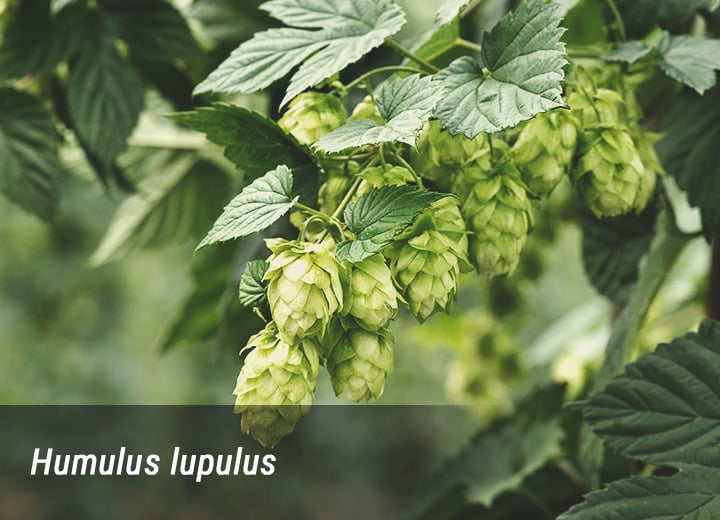
Celtis
Sure, hops look somewhat similar to cannabis, and both plants smell similar to boot. But other genera within the Cannabaceae family look almost nothing like plants from either of these groups. Take Celtis, for example. This genus consists of 70 species of deciduous trees that often go by the names of hackberries or nettles.
These trees are extremely widespread, residing everywhere from southern Europe to eastern Asia, South America, North America, and Africa. These giants reach heights of 25 metres, and some species are used for their high-quality wood in cabinetry.

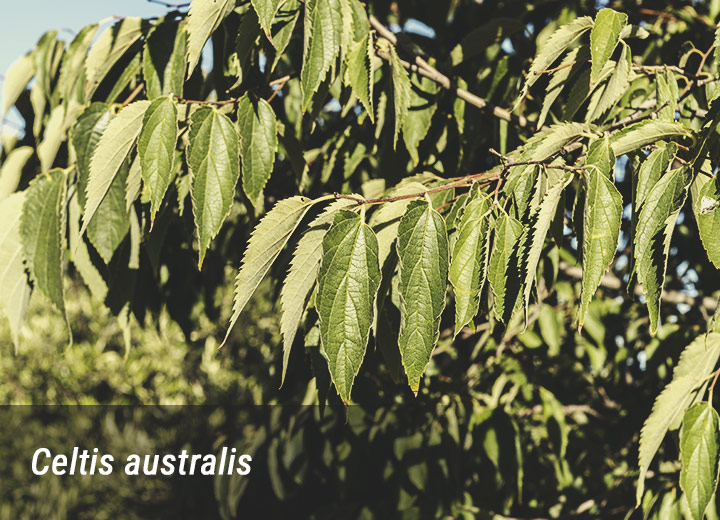
Trema
The members of this genera also look nothing like cannabis. All 15 species are evergreen trees that are closely related to their Celtis cousins. These species revel in the warmth of southern Asia, northern Australasia, Africa, and some parts of North America. They surge to heights of 20m and produce pointed leaves with serrated margins. Some species are valued for their ability to fix nitrogen and their tolerance of poor soil.

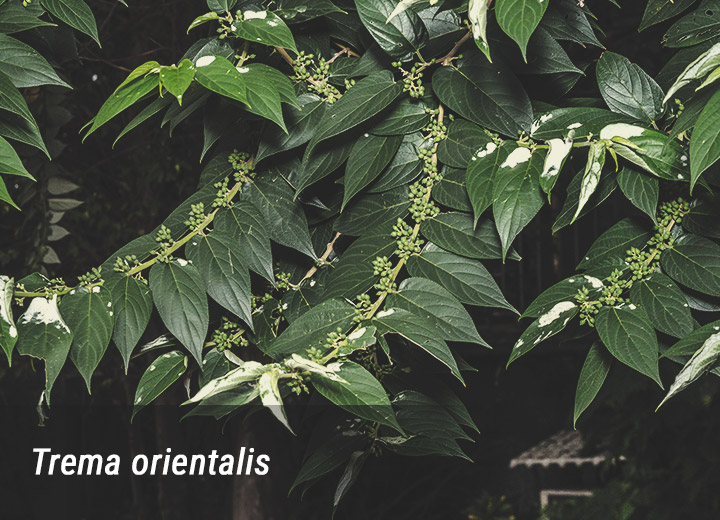
Cannabaceae — Quite the Family Reunion
Mind feeling a little blown? Don’t worry, we felt the same after we discovered cannabis’ close cousins—especially the towering trees! You now have a good grip on the basics of the Cannabaceae family, and you’re aware of how the intersection of old-school botany and modern phylogenetic technology accurately categorised the genera within. As a reward, go plan a smoke session with your friends and spread your newfound knowledge.
- Cannabis Systematics at the Levels of Family, Genus, and Species https://www.liebertpub.com
- Phylogenetic Invariants and Markov Invariants https://www.sciencedirect.com
- What is phylogenetics? | Phylogenetics https://www.ebi.ac.uk
- An update of the Angiosperm Phylogeny Group classification for the orders and families of flowering plants: APG II https://plantnetwork.org
- Molecular phylogenetics and character evolution of Cannabaceae https://onlinelibrary.wiley.com
- Cannabis (Genus) https://www.sciencedirect.com


























